|
|
|
|
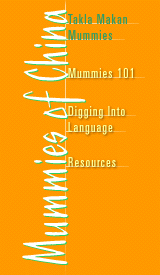 |
The Takla Makan MummiesIn the late 1980's, perfectly preserved 3000-year-old mummies began appearing in a remote Chinese desert. They had long reddish-blond hair, European features and didn't appear to be the ancestors of modern-day Chinese people. Archaeologists now think they may have been the citizens of an ancient civilization that existed at the crossroads between China and Europe.Mummies of "Tomb 2" 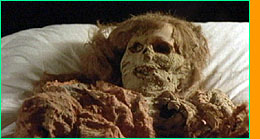 This mummy of a young woman was found in 1989. Based on her
partially dismembered limbs and gouged out eyes, Chinese
archaeologists believe she was a sacrificial victim.
This mummy of a young woman was found in 1989. Based on her
partially dismembered limbs and gouged out eyes, Chinese
archaeologists believe she was a sacrificial victim.
 This mummified boy, approximately one-year-old, was found in
the same grave. He, too, is believed to have been a
sacrificial victim who was buried alive.
This mummified boy, approximately one-year-old, was found in
the same grave. He, too, is believed to have been a
sacrificial victim who was buried alive.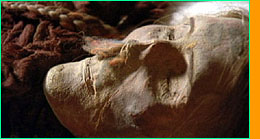 This mummy of a woman, who was approximately 40-years old, was
found in the main chamber of the same tomb. Her tall stature,
high nose, and red hair indicate that she was of European
descent.
This mummy of a woman, who was approximately 40-years old, was
found in the main chamber of the same tomb. Her tall stature,
high nose, and red hair indicate that she was of European
descent.Mummies from the Wupu cemetery 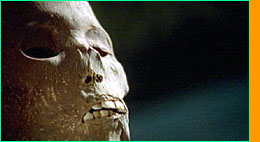 This mummy of an 18 to 20 year old woman is on display at a
museum in Hami. Her features, particularly her overbite,
indicate Caucasian heritage.
This mummy of an 18 to 20 year old woman is on display at a
museum in Hami. Her features, particularly her overbite,
indicate Caucasian heritage.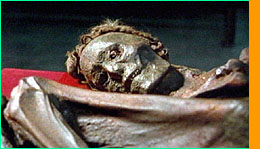 This mummified man was approximately 40 years old at the time
of his death.
This mummified man was approximately 40 years old at the time
of his death.
Takla Makan Mummies | Mummies 101 | Digging into Language Resources | Transcript | Mummies Home Editor's Picks | Previous Sites | Join Us/E-mail | TV/Web Schedule About NOVA | Teachers | Site Map | Shop | Jobs | Search | To print PBS Online | NOVA Online | WGBH © | Updated October 2000 |